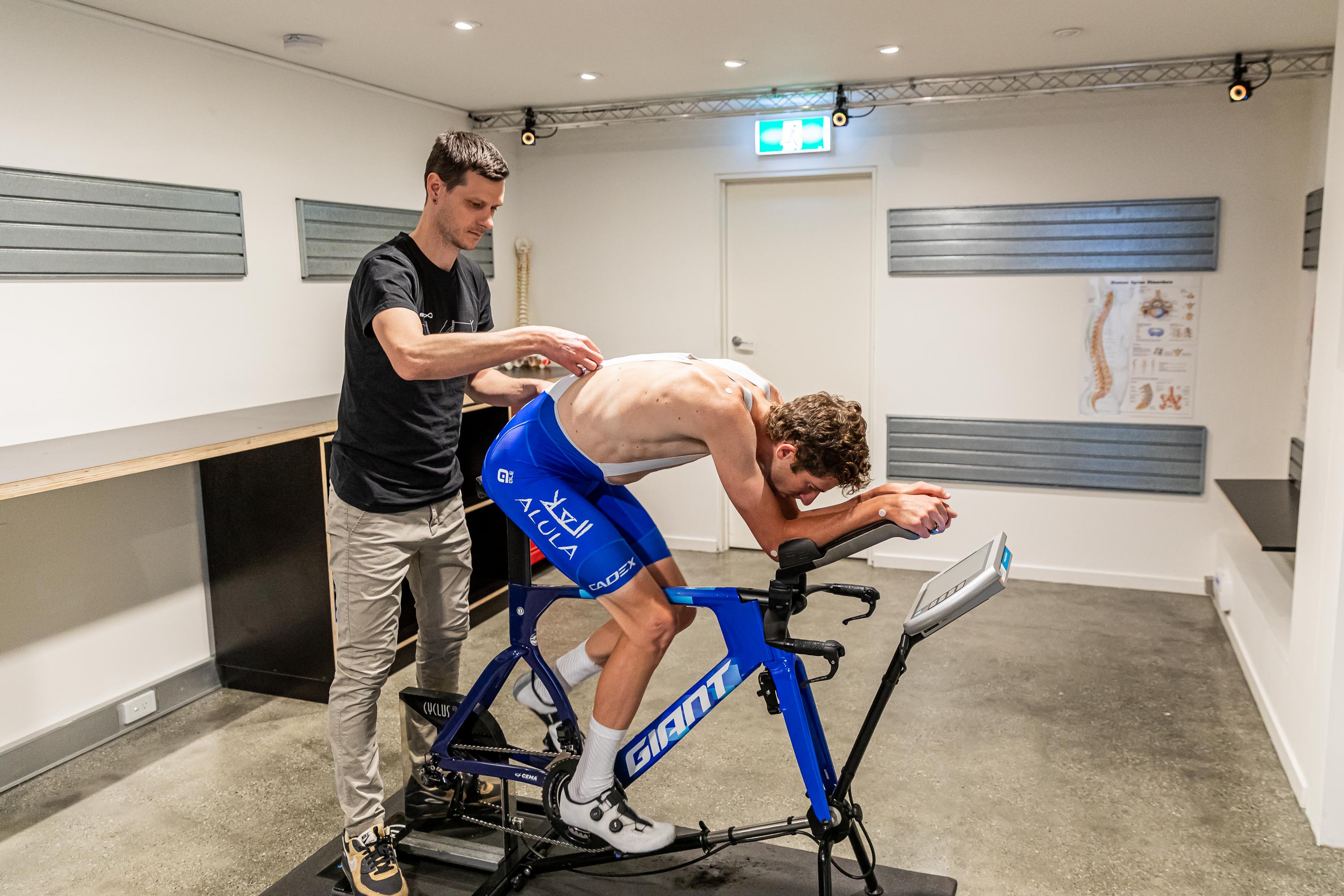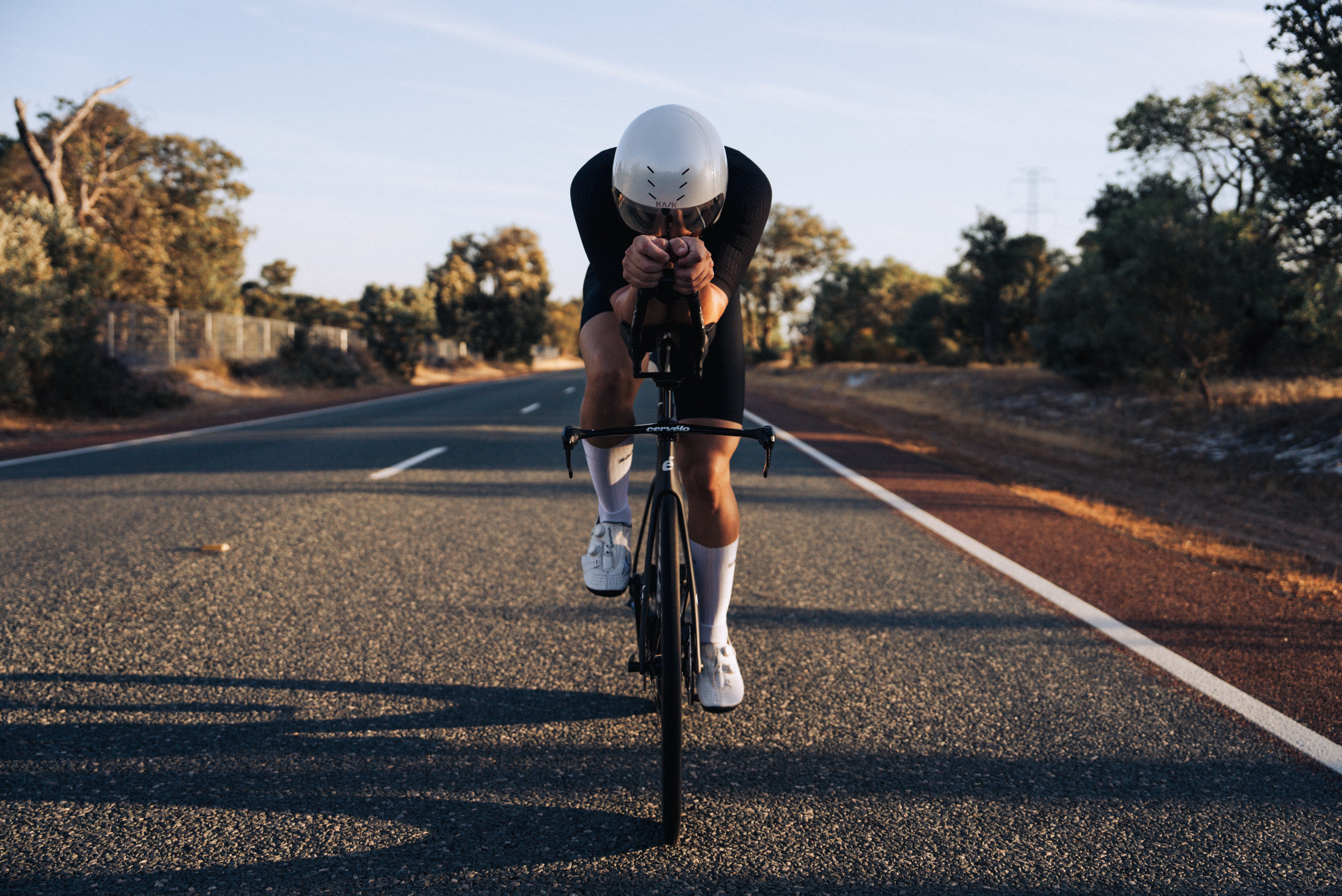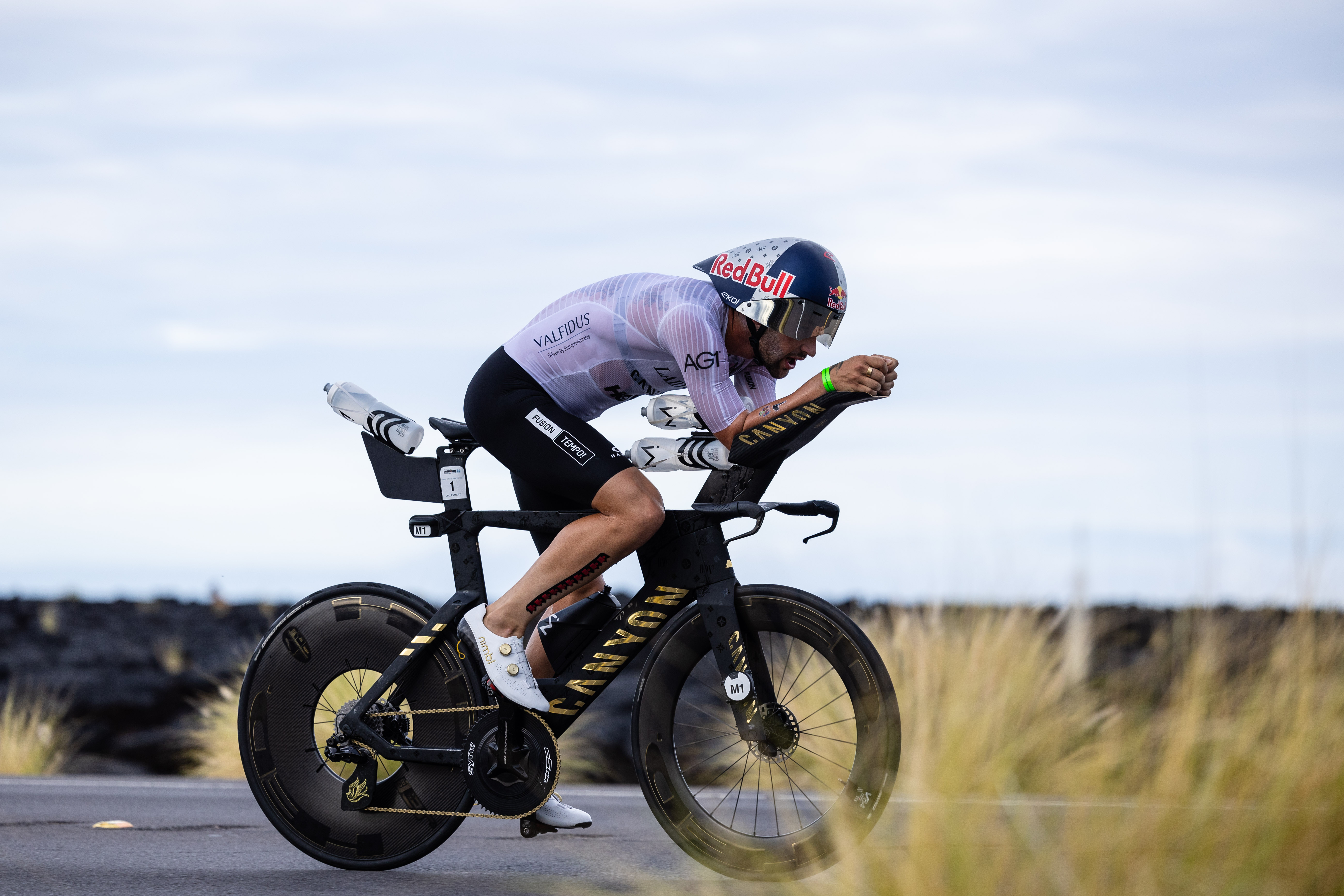How to Optimise Your Triathlon Set-Up
Posted by Joe Laverick on 6th Jan 2025
Whether you’re a seasoned pro who’s looking to win Ironman World Championships in Kona, or a beginner who’s competing in their first triathlon: everyone wants to be faster.
Having the correct equipment can both save you minutes and result in a comfier bike leg. What many athletes don’t realise is that the handlebars that come as stock on a time-trial bike are often useless for triathlon. They are often places that manufacturers look to save cost, and force an athlete into an unnatural position.
In this guide, we’ll explore the essential elements of triathlon performance on a bike-leg, and why handlebars and bike fit are so important.
1. Dial in Your Bike Fit

Aerodynamics isn’t just about equipment—in fact, aerodynamics is more about position than anything else. Between 70-80% of total drag comes from a rider’s body. While it’s more fun to concentrate on a new bike, position is vital.
Sync Ergonomics is a company born out of bike fitting, and our motto is simple: Improve the human-bike interaction.
Position: High Hands for the win.
- Comfort: Ensure your setup doesn’t compromise comfort, as discomfort can lead to reduced power output. If you are not comfortable, then your position is not correct for you.
- High hand position: Having a stretched out body, with high hands allows your head to tuck into the position and be more aerodynamically efficient. All of our products are built around the high hands position.
- Professional Fit: Consider getting a professional bike fit tailored to your specific body measurements and flexibility.
2. Optimise Your Cockpit
Your bike’s cockpit setup (handlebars, extensions, and hydration system) can significantly impact aerodynamics, and the above mentioned position.
- Aerobars & Extensions: Choose ergonomic aerobars or extensions to maintain an aerodynamic position. The goal here is comfort, triathlon has a unique demand of requiring an athlete to run straight after the bike. Maintaining comfort means you can still be effective on the third discipline.
- High Hands: As mentioned above, your cockpit should allow you to comfortably maintain the high hands position.
- Hydration Systems: Integrated hydration systems keep you hydrated without disrupting aerodynamics.
- Aerobar One: If you’re a beginner looking to optimise position, then our Aerobar One solution is a great place to start.
Pro Tip: Test your position with your race helmet on to ensure visibility!
3. Aero Helmets

Your helmet is one of the most important considerations when it comes to triathlon equipment set-up. It’s also one of the most personal choices too. Everyone’s position will vary - the helmet that is fastest on you, may be extremely slow on your competitor.
- Key Features to Look For:
- Shape: This is where everyone is different. There’s a trend to wear bigger helmets - these may look bizarre, but they have aerodynamic benefits.
- Ventilation: Ensure adequate airflow for comfort during longer races. It’s all well and good being aerodynamic, but if you mess up your thermo-regulation then there’s a chance that your performance will decrease.
Pro Tip: Ask a friend, local shop, or your triathlon club if you can borrow a helmet to test. We’d advise trying multiple different helmets before you commit to purchasing one!
4. Wear Aerodynamic Apparel
Triathlon suits and accessories play a significant role in reducing drag.
- Key Features:
- Lightweight, aerodynamic materials.
- Seamless construction for a smooth surface.
- Tight-fitting to prevent fabric flapping.
Pro Tip: Test your apparel in different weather conditions to ensure comfort and performance.
5. 1x Setup

Simplifying your drivetrain by moving to a 1x setup can aid performance, and the longevity of your bike. A 1x set-up means using a single chainring out front, eliminating the need for a front derailleur.
- Ideal for Flat Courses: On courses with minimal elevation, a 1x set-up improves your chainline and efficiency.
Alongside our South African partner, CSixx Components, we offer a whole range of chainrings.
Pro Tip: Wax your chain for additional gains.
6. The Bike
There’s a reason we’ve put the bike itself as the final point on this list. A new bike is the biggest, and most expensive upgrade you can make.
- Frame Choice: An aerodynamic frame does make a difference, but it’s more important to have a bike with a geometry that fits you. If you aren’t sure, speak to a bike fitter or your local bike shop.
- Electronic Gearing: Though not essential, using electronic gearing (Di2, or ETAP) makes both cable management and shifting easier.
- Wheels: Wheels significantly influence speed and aerodynamics. Selecting the best wheels requires balancing performance, durability, and course type. Deeper wheels provide aero-benefits, but may be difficult to ride in certain conditions. As the wind can make you feel unstable and buffet you around,
- Disc Wheel: We’re referring to a rear disc wheel here, not disc brakes. Disc wheels are optimal for time trials that take place in calm conditions, disc wheels are the gold standard for reducing wind resistance.
Pro Tip: Consider your racing environment before you buy equipment. Even the pros don’t use a disc wheel for some races if the conditions are too windy.
Elevate Your Performance with Sync Ergonomics
- At Sync Ergonomics, we specialise in high-end products designed to optimise your triathlon and time trial performance. From cutting-edge cockpit solutions to our driveline ecosystem, our mission is to give you the competitive edge you need to excel.
Fine-tuning your triathlon setup with the right gear and adjustments will help you maximise speed and efficiency. Gear up with Sync Ergonomics and experience the difference that precision engineering brings to your race.

